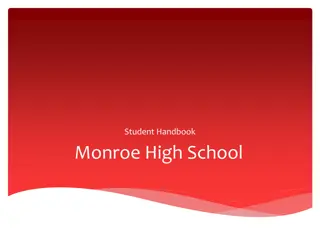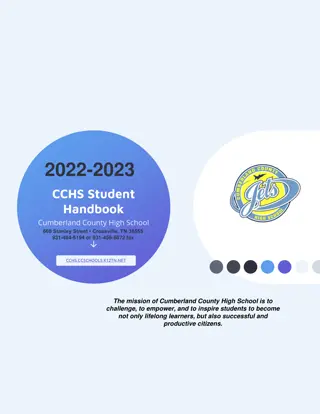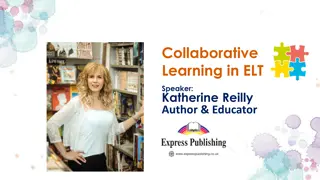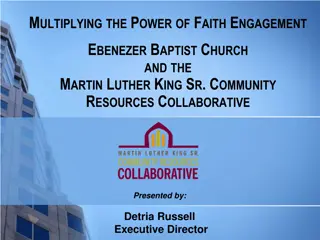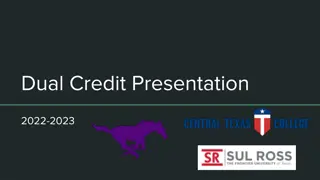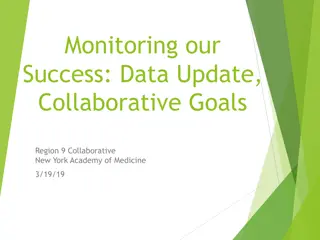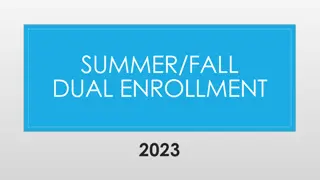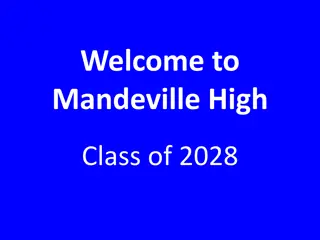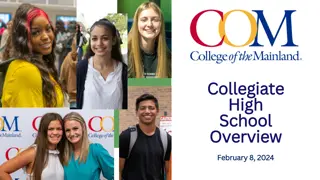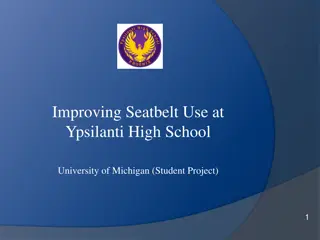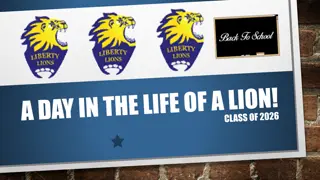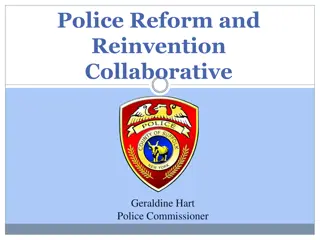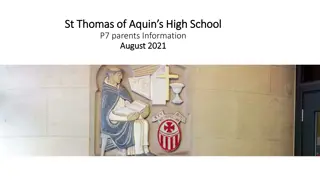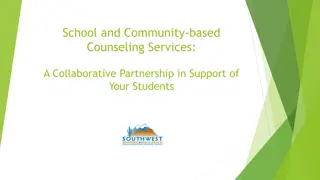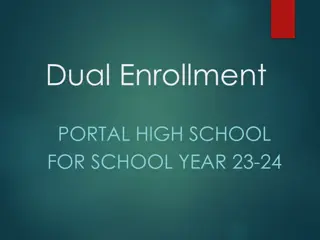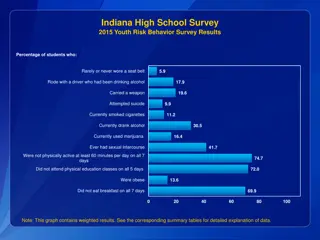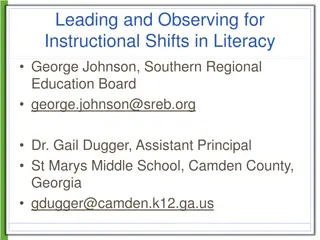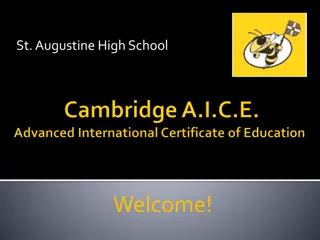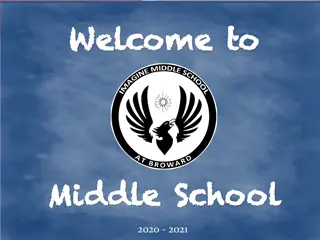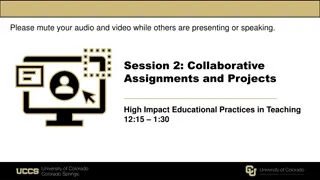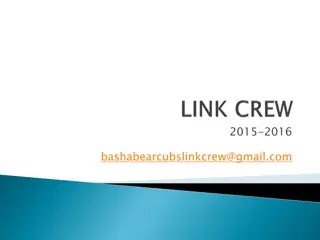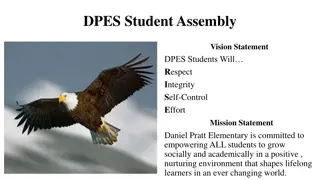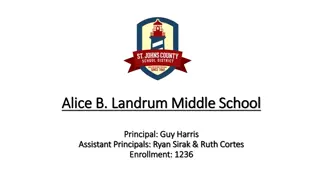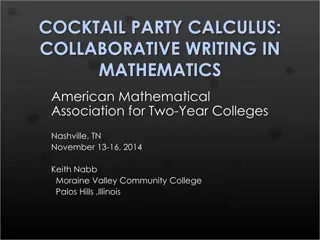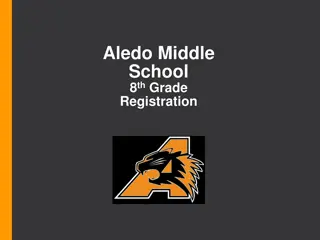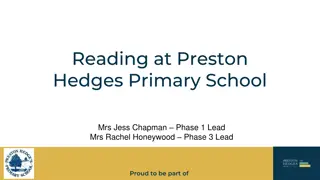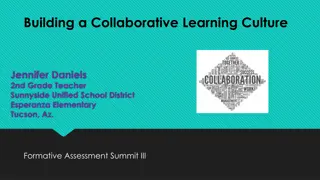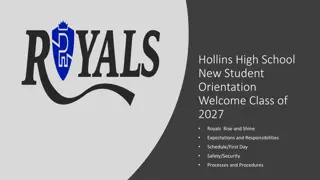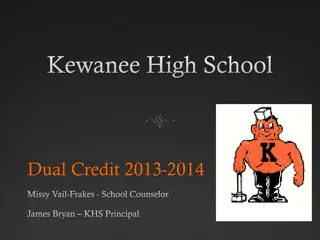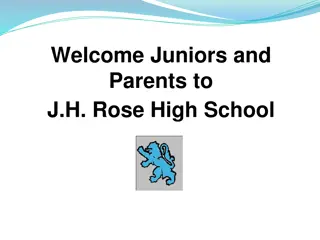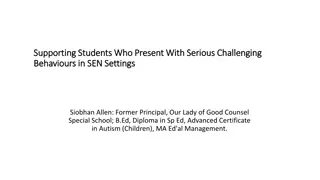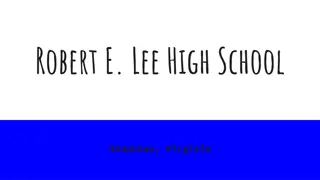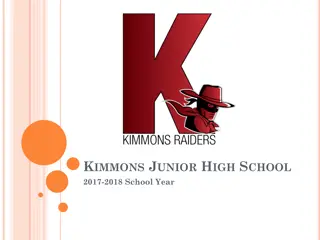Enhancing High School Students' Collaborative Information Use
This research project delves into the collaborative information use by high school students in digital learning environments. It explores team-based inquiry, project-based learning, collaborative learning, and cooperative learning. The study aims to track the process of team work, understand the dynamics of co-construction of knowledge, analyze student engagement with information sources, and examine the relationship between individual and group learning outcomes. Challenges in transitioning to real collaborative knowledge building in digital spaces are highlighted, along with insights from previous studies.
Download Presentation

Please find below an Image/Link to download the presentation.
The content on the website is provided AS IS for your information and personal use only. It may not be sold, licensed, or shared on other websites without obtaining consent from the author. Download presentation by click this link. If you encounter any issues during the download, it is possible that the publisher has removed the file from their server.
E N D
Presentation Transcript
Collaborative information use by high school students in a digital learning environment: Connecting metatheory, theoretical frameworks and methodology, Dr. Ross J. Todd Center for International Scholarship in School Libraries (CISSL) School of Communication & Information Rutgers, The State University of New Jersey rtodd@rutgers.edu www.cissl.rutgers.edu www.twitter.com/RossJTodd
CiSSL funded research project 2012-2014 Thanks to Punit Dadlani (Phd student and CiSSL Barham Scholar); LaDawna Harrington (school librarian) and Suzane Snyder (English Teacher), Milburn High School New Jersey
Research Context Increasing attention being given to team-based inquiry and project-based learning. Central to this discourse are discussions surrounding collaborative learning and cooperative learning . Collaborative learning characterized as involving a higher level of interdependence between group members Cooperative learning has been shown to involve a more divide and conquer type of approach.
Digital Environments Web spaces used more as a coordination tool for organizing the collaborative work than as a space for negotiating, debating and creating knowledge Difficulty of moving from individualistic ways of working to achieving real collaborative knowledge building in web spaces Some evidence of developing team work skills, and project management skills Difficulty and complexity of promoting real collaborative knowledge building in digital environments Lakkala (2005); Lakkala, Ilom ki & Palonen, (2007); Johnson, Johnson & Roseth (2010); Scardamalia & Bereiter, 2006); Sormunen et al (2013)
Research Goals Track the process of team work: to understand how student teams work together to build a shared representation of knowledge Examine the dynamics of the co-construction of knowledge by teams of students Track students engagement with information sources and how the teams transform and co-construct text into their joint representation of knowledge Track both individual learning and group learning, and to understand the relationship between individual knowledge developed in the process and the team representation of the joint product created in the process
Sample & Research Task Grade 9 English 42 students randomly assigned to 14 groups Course offers wide range of challenging literature; stresses critical thinking, speaking & research strategies In the research task, groups were assigned a novel and to construct argument surrounding literary merit of the text: literary devices used to support literary merit Novels, eg.: The Alchemist; Lord of the Flies; The Bluest Eye; The Perks of Being a Wallflower; The Hobbit; The Chosen; Da Vinci Code; Extremely Loud and Incredibly Close
Metatheory: Constructivist Learning Jean Piaget: (1896-1980) (Swiss Psychologist & Philosopher) Theory of Cognitive Development John Dewey: (1859-1952) (Educational Philosopher) Philosophy of Pragmatism: knowledge as arising from an active adaptation of the human organism to its environment; Active Learning George Kelly: (1905-1962) (Psychologist) Personal Construct Theory: People behave according to how they construe the world around themselves Jerome Bruner: (1915 ) (Psychologist) Cognitive Learning Theory / Towards a Theory of Instruction ; Structuralism; Lev Vygotsky: (1896 - 1934) (Russian-Cultural-Historical Psychology; Social Learning; Metacognition; Zone of Proximal Development Theory of Children s Mental Development
Constructivist Learning: Basic Premises We construct our own unique personal worlds Construction involves the total person incorporating thinking, feeling, and acting There is no knowledge independent of the meaning attributed to experience by the learner, or community of learners We have to focus on the learner in thinking about learning, not on the subject / lesson to be taught Individual learners must actively build knowledge and skills; learners construct knowledge for themselves Instruction centers on the experiences and contexts that make students willing and able to learn Two basic themes run through the theory of construction. One is that we construct our own unique personal worlds, and the other is that construction involves the total person incorporating thinking, feeling, and acting in a dynamic process of learning. Kuhlthau (1993, p.15)
Kuhlthau: ISP From Metatheory to Theoretical Framework INSTRUCTIONAL FRAMEWORK Kuhlthau, 2004, p. 82)
Wiki Environment & Data Collection Completed a pre and post reflection task (SLIM Reflection Tasks (Student Learning Through Inquiry Measure developed by CISSL) Students discuss research topics, establish working relationships, create plan and manage the tasks, collect information sources, construct their products (Google Docs); dialog and feedback (class presentation, visual display, and annotated bibliography) Capture and track their research and writing processes, and decision-making processes Make daily journal entries during the two weeks that the classes were scheduled in the library Students required to read each other s journal responses and comment on at least one other student s journal response Overall, a total of 945 conversation entries were recorded. The majority of reflections were about one paragraph (5-6 sentences) long. On average, the responses to other reflections were around 2-3 sentences long, and posts that were responded to tended to receive 2-3 responses.
SLIM Reflection Tasks Cognitive, Affective, Interpersonal Writing task 1 and 2 consisted of the following questions 1. Write the title that best describes your research project at this time. 2. Take some time to think about your research topic. Now write down what you know about this topic. 3. What interests you about this topic? 4. How much do you know about this topic? 5. Write down what you think is EASY about researching your topic. 6. Write down what you think is DIFFICULT about researching your topic. 7. Feelings about working in groups 8. Feelings about project
Additional Questions at Writing Task 3 1. What did you learn in doing this research project? (This might be about your topic, or new things you can do, or learn about yourself) 2. How did the SCHOOL LIBRARIAN help you? 3. How did the TEACHER help you?
Student Learning through Inquiry Measure (SLIM) http://cissl.rutgers.edu/joomla-license/impact- studies/57-impact-studies-slim Student Learning through Inquiry Measure (SLIM) SLIM Handbook SLIM Reflection Instruments and Scoring Guidelines SLIM Scoring Sheet
Data Analysis Employed both EMIC and ETIC approaches in our data analysis Emic approach takes a grounded approach, developing emergent codes extracted from the text, and establishing categories of codes to identify core concepts and their relationships, driven by the data. An etic approach to data analysis typically starts with a predetermined set of concepts, and these become the lens though which the data is analyzed and interpreted. - gives emphasis to what the researchers consider to be important. This importance is often established by the synthesis of the literature review.
Dimension Social Justice Description Positive Negative Working in Groups Work is spread out; The work is split up evenly and workload shared; No one overloaded Refers to core ideas around: shared responsibility, equity of contribution, equity of treatment, division of labor and workload Waste time in ensuring others are doing their fair share; Uneven distribution of workload; Uneven commitment and effort; Lack of group togetherness; Problem of equal assessment for unequal contribution Difficulty of consensus building; Complexity of compromise; Slowing down completion progress Working in Groups: EMIC analysis Refers to the opportunities that group work provides in terms of the knowledge generation and production process Acquisition of new ideas not thought of previously; Recognition of and engagement with multiple opinions, perspectives and viewpoints; Builds a wider range of ideas and thoughts; Learning and improving from each other s input; Opportunities to think differently about the topic that is being examined Knowledge creation
Dimension Interpersonal interactions Description Positive Negative Digital Environments Refers to the role of and nature of the interactions between group members to accomplish the tasks Developing group interaction skills; Learning about and from group members; Integration of multiple skills that strengthen the project and create a stronger project; Difficulty of communicating ideas Group characteristics Project management Refers to management functions including distribution of workload, mapping out and monitoring the project progress. Project auditing and checking Planning perspectives Project timing and organization Managing workload Project monitoring for quality Complexity of managing process problems: control, responsibility Implementing effective compromise
Post-task perceptions of the group process
Dimension Knowledge creation and outcomes Description refers to the opportunities that group work provides in terms of the knowledge generation and production process Positive sharing of different perspectives and viewpoints; depth of knowledge outcome Quality product; Resolution of confusion Equitable division of workload and tasks; Reduction of stress; Strength of individual expertise; Efficiency and effectiveness Mutuality of working to common goal; Development of collegial relationships; Development of interpersonal skills; Learning support Negative Reluctance to compromise on strongly held views Division of workload and Learning equity refers to workload balances and resultant learning outcomes Time involved in getting team to produce; Realization of shared responsibility; Inequity of group assessment not matched to individual input Group tension; Interaction of personal attributes; Stress Collegiality and cooperation refers to the role of group tasks in relationship formation and the benefits afforded through this
Social Justice Broadly defined: belief that all people deserve equal social, political and economic rights, treatment and opportunities (Zajda et al., 2006, p.6; Rawls, 1971, p.3). LIS scholars have long grappled with issues that surround the concept of social justice (Chatman, 1985, 1992, 1996, 1999; Fisher, 2004; Futterman, 2008) All human beings have an inherent worth and deserve information services that help address their information needs (Rioux 2006 p. 13). Library and Information Science (LIS) discipline has produced little research that directly invokes social justice as an informing metatheory to respective research (Mehra, Albright and Rioux, 2006; Rioux, Mehra and Albright, 2007; Rioux, 2006)
Social Justice: Etic Analysis Consequentialism: individual perceptions of a situation are considered just if the individual can achieve some end (consequence) which he/she values in some particular way eg. Time-space contexts - situations, meetings, assemblies, work structures and their role in outcomes Distributive justice: just allocation or distribution of assets and liabilities (or strengths and weaknesses or benefits and burdens) amongst a society or group of individuals Equality / Egalitarianism: belief that in any given situation, all people should have en equal amount of resources, access to services and skills (goods, services, etc) available to them.
Discussions Questions


